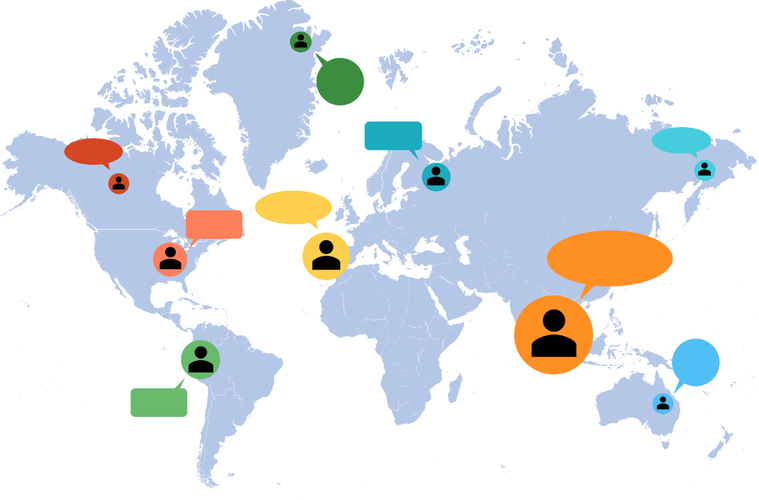The Five Phases Of Staff Development Principles Of Administration
In the earlier levels of your team’s formation, establish a transparent communication plan. A communication plan is an outline of how your staff goes to communicate necessary information to key stakeholders. Clarity on the varied avenues of communication allows staff members to effectively get work done, perceive their roles, and know where to find the information they need about work. Establishing a communication plan might help you do all of these things in a means that’s straightforward on your group to comply with. As a team lead, it’s your objective to get your group to this stage as shortly as possible. Have you ever puzzled why it takes a while for a new staff to hit peak performance?
During the norming stage, the staff begins to resolve conflicts and set up a way of unity. Team members work collectively extra harmoniously and begin to develop a set of norms or shared expectations for how they will collaborate. Storming is the most difficult and unproductive of the 5 phases of development, but stages of building a team it’s however vital to the team improvement course of. When team members are upset with themselves, the duty, or each other, they be taught what causes probably the most dysfunction. With this data, the team can begin aspiring to a better group dynamic.

The principal work for the team in the course of the Forming stage is to create a staff with clear construction, targets, direction and roles so that members start to build trust. During the Forming stage, much of the team’s energy is targeted on defining the staff so task accomplishment may be relatively low. Team effectiveness is enhanced by a team’s commitment to reflection and on-going analysis. In addition to evaluating accomplishments in phrases of assembly specific objectives, for teams to be high-performing it is essential for them to know their growth as a team. You can inform a team is stuck storming when they’re trapped in infinite cycles of battle and energy struggle. Leaders must enable room for the storming course of with the right stability of persistence and direction.
Team Constructing Phases: 5 Steps
(We will discuss the function of battle and battle resolution in the subsequent section). While engaged on a high-performing staff could also be a very pleasurable and growthful expertise, it’s not the tip of group growth. There remains to be a need for the staff to concentrate on both process and product, setting new goals as applicable. Changes, similar to members coming or going or large-scale adjustments in the exterior surroundings, can lead a team to cycle again to an earlier stage. If these modifications – and their resulting behaviors – are acknowledged and addressed immediately, groups might efficiently stay within the Performing stage indefinitely.

Formal and casual leaders establish their place and begin to offer effective steerage. Team members start to work collectively and share widespread practices and procedures. Habits form alongside a shared vocabulary that builds mutual belief required to maneuver forward. Team habits and norms will shape the long run culture of your group.
During the “forming” stage of team development, the team members acquaint themselves with the basic elements of their task. Forming stage dialogue matters usually embrace the project goal, team member roles, fundamental ground rules, and designation of authority. The forming stage is truly a honeymoon section in teamwork—productivity is low, but the team members are too newly acquainted to encounter conflict. This paper became the groundwork for the levels of group improvement. Tuckman’s basis helps staff leaders understand how team dynamics change as a project progresses.
During the Ending Stage, some group members may turn into much less focussed on the staff’s tasks and their productivity could drop. Alternatively, some group members might discover focussing on the task at hand is an efficient response to their unhappiness or sense of loss. Simplilearn is a cutting-edge workplace training service that provides just that.
Tips On How To ‘unstick’ Your Prime Staff
Work tradition is a time period that gets used a lot, however many people don’t fully perceive its that means and significance. However, culture at work plays a huge function in your groups, their wellbeing, and their success. An ideal work culture can help you build cohesive groups and reach new heights.
Your staff doubtless never transitioned via that stage and is still coping with those downside, so back and give attention to battle resolution, understanding differences, working collectively, and so forth. On high of that, staff growth can even play a big role within the total culture of the workplace. People work better when they get pleasure from their work culture, and other people get pleasure from work extra after they have groups they like working with. It’s quite simple, however it can be stunning how big of an influence joyful workers can have in your group. With distant teams, it’s straightforward to run on assumptions until you’re nearly up in opposition to a deadline — and you then uncover that you just didn’t get the result you needed.
However, their journey from the initial cautious stage to changing into a united, resilient, and dedicated team follows a well-established sample. Back in 1967, Bruce Tuckman launched a mannequin that has been extensively referenced and expanded upon over time. This mannequin identifies five phases of staff development that every group goes through, ranging from their first meeting till the team finally disbands. In the adjourning stage, many of the team’s targets have been completed. The emphasis is on wrapping up last duties and documenting the effort and outcomes. As the work load is diminished, individual members may be reassigned to different groups, and the group disbands.
Ask them to prepare examples beforehand outlining what labored and what didn’t, after which give each individual five minutes to share their ideas. Document the comments so that it’s straightforward to see which tendencies emerge and what adjustments need to be made going ahead. Be conscious that, although all four phases are required for effective https://www.globalcloudteam.com/ groups, the process just isn’t always linear. The individual roles your group members play are incredibly necessary to team efficiency. These roles could be the official title they had been hired to do, or the position they fit into naturally within the group dynamic.
Learning how to handle dissonance early strengthens a group and readies teammates to overcome more advanced challenges with grace. Skipping this significant improvement stage can stunt a team’s development and delay true concord. In conclusion, Bruce Tuckman’s model of team building provides a priceless roadmap for navigating the complexities of software development tasks.
Redefining Management: Empowerment, Vision, And Repair At The Core
And on the same time, group members may really feel a sense of deep satisfaction at the accomplishments of the staff. Individual members might really feel all of this stuff on the similar time, or could cycle by way of emotions of loss adopted by feelings of satisfaction. Given these conflicting feelings, particular person and group morale could rise or fall throughout the ending stage. It is highly doubtless that at any given second individuals on the staff will be experiencing completely different emotions in regards to the staff’s ending.
- As teams norm after which carry out, leaders should steward the processes, systems, and interactions that gas the team.
- It’s necessary to notice that not all teams make it past this stage.
- This can be the time in which groups can celebrate everything they have achieved collectively.
- In different words, a team doesn’t develop from begin to end in a single day.
The Five Stages of Team Development have been developed by psychologist Bruce Tuckman in 1965. These five stages advance as a team works collectively, however particularly when a team brings awareness to their dynamic. This is also the time during which groups can rejoice every thing they’ve achieved collectively. Take the time to mirror in your achievements and remind your team why they’re doing what they do.
Make sure everybody steps back every day or week to try the bigger image. Explore Agency Life and learn how to scale your agency, straight from company leaders. Some teams do come to an finish, when their work is completed or when the organization’s needs change.
Reaching the performing stage is a significant success and sometimes precipitates some form of team studying. Team studying is a behavioral strategy of in search of, gathering, discussing, and implementing strategies of group success. Whether via training, group initiative, or innovative leadership, staff studying is an motion step that ensures healthy staff improvement. As the actual work kicks in, the project may present each technical and interpersonal challenges.

Group members might compete with each other for areas of duty and/or specific tasks. There can additionally be conflict concerning the goals and goals of the project (or startup). For these group members who have previously labored collectively, previously unresolved points could even arise.
Forming Stage
When it comes to sustaining performance and continuous growth, team building is a good choice. With staff constructing programs, you’ll have the ability to help your staff grow while addressing key areas in want of improvement like management, teamwork, communication, and more. Developing sturdy and cohesive teams is crucial for each enterprise or organization, but team growth doesn’t occur in a single day. There are numerous phases of staff improvement that can ultimately result in a synergistic staff, which carries with it many benefits.




